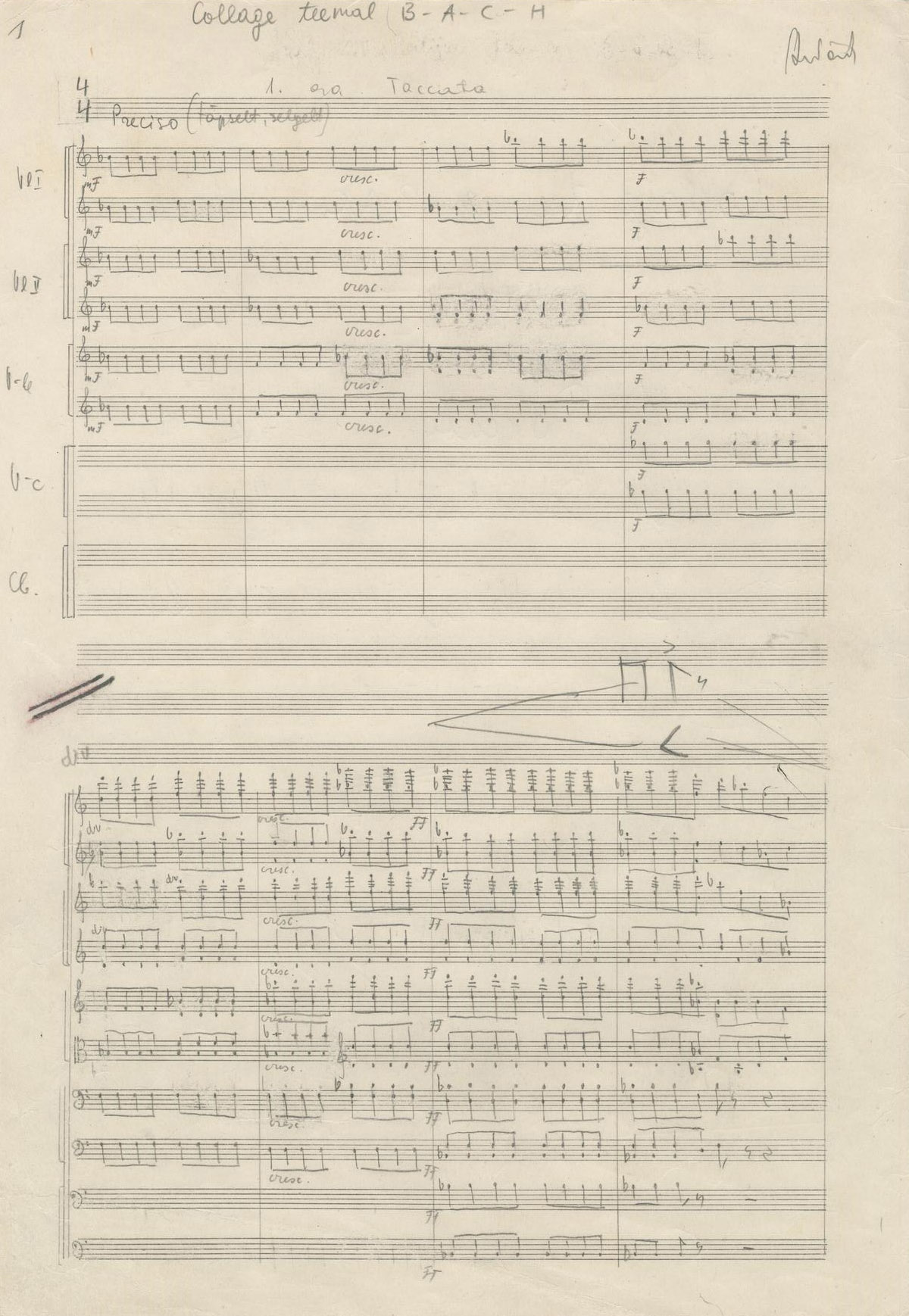The most remarkable line of development in Pärt’s early compositions can be found in his collages, which in his case are expressed in a personal and dramatic manner. Those works are witness to the growing inner anxiety and crisis for the composer as he was not satisfied with the modernist techniques he has used, and longed for something different. Confronting these two musical worlds is the common character to all Pärt’s collages.
Pärt’s first composition created with the collage technique was Collage über B-A-C-H (1964). The titles of the three movements of this composition – Toccata, Sarabande and Ricercare – allude to Baroque forms, and the music also corresponds to the nature of these forms. The whole composition is based on …
The most remarkable line of development in Pärt’s early compositions can be found in his collages, which in his case are expressed in a personal and dramatic manner. Those works are witness to the growing inner anxiety and crisis for the composer as he was not satisfied with the modernist techniques he has used, and longed for something different. Confronting these two musical worlds is the common character to all Pärt’s collages.
Pärt’s first composition created with the collage technique was Collage über B-A-C-H (1964). The titles of the three movements of this composition – Toccata, Sarabande and Ricercare – allude to Baroque forms, and the music also corresponds to the nature of these forms. The whole composition is based on a 10-note sequence that starts with the notes b–a–c–h. In every segment, that sequence has a different musical solution, joining the various parts of the composition into a unified whole. The entire collage has been named after the 2nd movement, Sarabande. This is based on Sarabande from J. S. Bach’s English Suite in D Minor, which begins with Bach’s musical name motif, and which Pärt has orchestrated for string instruments and oboe. However, Pärt has cut Bach’s Sarabande into phrases and interlaced them with his own music, which follows the rhythm and tempo of Sarabande, but has been harmonised using 10-note clusters. Beautiful and delightful music is contrasted with restless segments, full of internal tension. There is also a contrast in timbre, achieved through instrumentation: in the segments of Bach’s Sarabande, a harpsichord characteristic of baroque music has been added to the string orchestra; the clusters of string instruments are even more dense and powerful with the help of a contemporary keyboard instrument – the piano.
As the composer himself has explained, "Turning to Bach was for me a way of stating my position regarding my experience with twelve-tone music. I wanted to step outside the situation, in order to step into something that I had not yet explored. In my state of extreme discomfort at that time I wanted to prove to myself how beautiful Bach’s music was, and how hateful mine was. [---] I was convinced that through this musical sacrifice I could gain a clearer vision of my own contradictions." (Enzo Restagno, Arvo Pärt in Conversation, 2012, p. 14)
Collage über B-A-C-H premiered on 4 November 1964 in the Estonia Concert Hall, performed by the Estonian Radio Chamber Orchestra, and conducted by Eri Klas.
